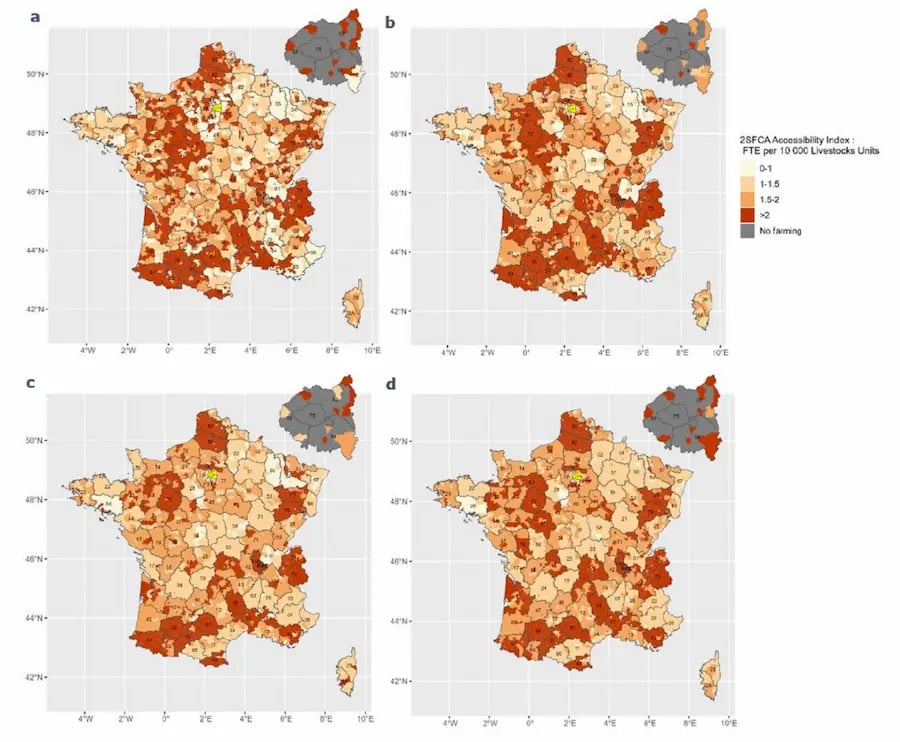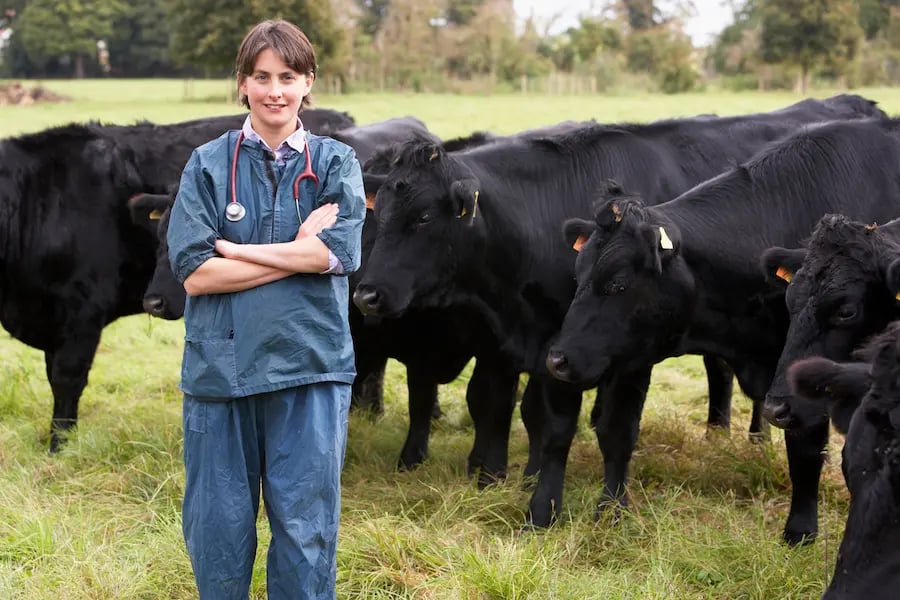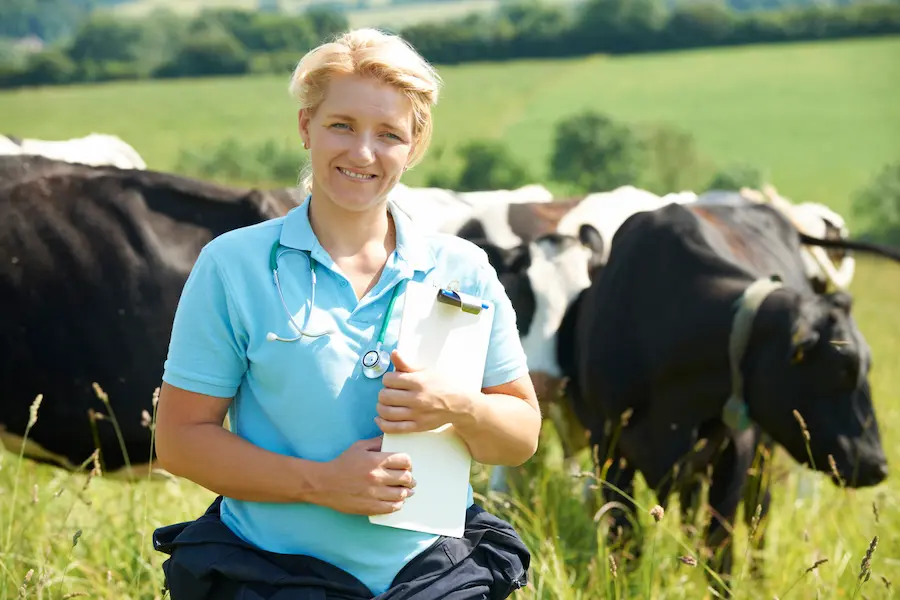In recent years, a pressing concern has emerged within the veterinary community—the scarcity of veterinary professionals in rural areas. A report published by the Federation of Veterinarians of Europe (FVE) in July 2020 [1] sheds light on the key factors contributing to this shortage and offers valuable insights into potential solutions.
The Challenge of Rural Veterinary Shortage
FVE surveyed the shortage of veterinarians in rural in 28 European countries. The survey results highlighted that shortage of veterinarians in rural areas is a concern in all the surveyed countries. Around 78.5% are already experiencing a shortage, and while for the rest 21.5% the shortage is not reported to be significant; evidence suggests it will worsen in the coming years.
According to FVE, “the shortage of veterinarians in remote areas is generally not reported to be linked to a shortage of veterinarians in the whole country or a lack of new graduates. Rather, it reflects the work and life preferences of veterinarians nowadays, that prefer to work with companion animals and larger practices in urban locations”.
Indeed, the imbalance in the distribution of veterinarians between urban and rural areas is a multifaceted challenge. Rural regions often face difficulties in attracting and retaining veterinary professionals (Figure 1) due to various reasons outlined in the FVE report, among which:
- Lack of attractiveness of rural areas: the lack of services and infrastructures in remote areas does not meet with current social aspirations, such as raising a family or finding the desired work/life balance.
- Economic factors: because of the low financial power of small and medium livestock businesses, they cannot always afford to pay for veterinary services, and this results in a decrease in the demand and thus in a lack of sustainability for veterinary practices.
- Working conditions: having to work long hours to make up for the lack of workforce, travelling long distances and increased on-call duties render rural practice unattractive for most.

Figure 1. Spatial accessibility of the cattle sector to veterinarians in France for various travel time thresholds. From [2].
This trend of reduction of the number of rural veterinarians is expected to intensify in the coming years with the retirement of many veterinarians nearing their sixties, who will be difficult to replace. As an example, the age distribution of practicing veterinarians in France (Table 1) is particularly enlightening about the current situation (a low interest in rural medicine among those aged 20 to 29) and the one we should expect to see in the next decade when those over 55 will have retired.
Table 1- Age pyramid of the Veterinarian profession in 2019. Adapted from [2].
|
Age (years) |
Men |
Women |
Total |
% rural/all vets |
|
20-29 |
103 |
156 |
259 |
11% |
|
30-39 |
572 |
517 |
1089 |
19% |
|
40-49 |
622 |
247 |
869 |
19% |
|
50-54 |
359 |
73 |
432 |
20% |
|
55-57 |
217 |
41 |
258 |
20% |
|
58-61 |
342 |
31 |
373 |
23% |
|
≥62 |
331 |
19 |
350 |
26% |
However, this is not exclusively a European concern [3]. Currently, there is also a critical shortage of food animal veterinarians in both private and public practice, particularly in rural communities in the U.S. and insular areas [4,5]. Therefore, there is a need for more food animal and public health veterinarians, mainly in underserved rural areas.
Implications of the Shortage
Inevitably, the shortage of veterinarians in rural areas will lead to a deficit in livestock practitioners. As a result, breeders will encounter challenges in securing veterinary support for the health monitoring of their animals [3], causing significant consequences:
- Animal Health and Welfare: Limited access to veterinary care jeopardizes the health and well-being of animals in these regions.
- Agricultural Sustainability: Livestock farming plays a crucial role in rural economies. Shortage of veterinarians further hinders the development of the livestock sector and rural areas more generally.
- Public Health Concerns: Veterinarians in rural areas play a pivotal role in disease surveillance and control, particularly in zoonotic diseases that can transmit between animals and humans. [5]

Addressing the Shortage
In response to this situation, several countries already implemented different strategies to mitigate the problem, among which:
- Educational Initiatives: In France, veterinary schools provide government-funded internships with an 80% success rate in retaining students in rural farming post-program. Key factors include personalized training under rural veterinarians and extensive hands-on experience in rural practice.
- Policy Interventions: In Finland, Greece, Norway, and Sweden, laws mandate that veterinary services must be organized and funded at the municipal or regional level. These state-employed veterinarians secure animal healthcare throughout the country.
- Financial Incentives: Public funding in Spain, Scotland, and France covers veterinary services for small to medium-sized rural farms or at-risk areas. This boosts demand for vet services, making profitable veterinary businesses more feasible, while ensuring proper animal health care.
- Professional networks in the same area improve working conditions by enhancing time management, creating appealing schedules, establishing rotating on-call duties, and addressing professional isolation through connections among practitioners. Scotland offers an example of this successful approach.
Conclusion
The shortage of veterinarians in rural areas brings serious socio-economic consequences, as it will result in a weakening of the animal’s health status, a loss of profitability in livestock farming, and a worrying weakening of the national systems for the epidemiological surveillance of animal diseases. Addressing these problematic demands collaborative efforts from various stakeholders. By implementing targeted strategies like the ones outlined in the FVE report and fostering a supportive environment, we can work towards ensuring equitable access to quality veterinary care in rural regions.
References
[1] Federation of Veterinarians of Europe (FVE). "Addressing the Challenges of Veterinarian Shortage in Rural Areas." July 2020.
[3] Poisson et al, 2020. Installation et maintien de l’exercice vétérinaire dans les territoires ruraux. Ministère de l'Agriculture et de la Souveraineté alimentaire.
[3] Berrada, M., Ndiaye, Y., Raboisson, D. et al. Spatial evaluation of animal health care accessibility and veterinary shortage in France. Sci Rep 12, 13022 (2022). https://doi.org/10.1038/s41598-022-15600-0
[4] Hirsch J. 2022. There’s a Shortage of Livestock Veterinarians and It’s Making Our Food Less Safe. Ambrook Research. https://ambrook.com/research/studies/rural-veterinarians-shortage-food-animals-food-safety-security. . Accessed 10 Nov 2023.
[5] Farley, D. Tackling the U.S. Food Animal Veterinarian Shortage. NIFA’s Veterinary Medicine Loan Repayment Program. National Institute of Food and Agriculture. 28 May 2021. https://nifa.usda.gov/blog/tackling-us-food-animal-veterinarian-shortage-nifas-veterinary-medicine-loan-repayment-program. Accessed 10 Nov 2023.
About the author
Carla Azevedo (Ruminants Global Marketing Manager)
Graduated from Trás-os-Montes e Alto Douro University (Portugal) in 2002. Internship in Lander Veterinary Clinic (USA) in 2002, one of the most important dairy practices in California. Master of Veterinary Science, in theriogenology in 2014. In 2009 was awarded the Bayer Animal Health Award in farm animals. Carla accumulated over 13 years’ experience as practitioner in bovine health, production medicine, reproduction, mastitis and economical management, being partner in one of the largest dairy cows private practices in the country, MPLVET. Published several international peer reviewed publications on mastitis and reproduction. In 2014 joined the Animal health Industry having occupied different national and international positions. Since 2018 took over a global position, taking responsibility worldwide as Global Marketing Manager for the Ruminant vaccine and udder health portfolio of Ceva. In 2022 completed an Executive MBA in Porto Business School.
Explore author’s articles



Leave your comments here